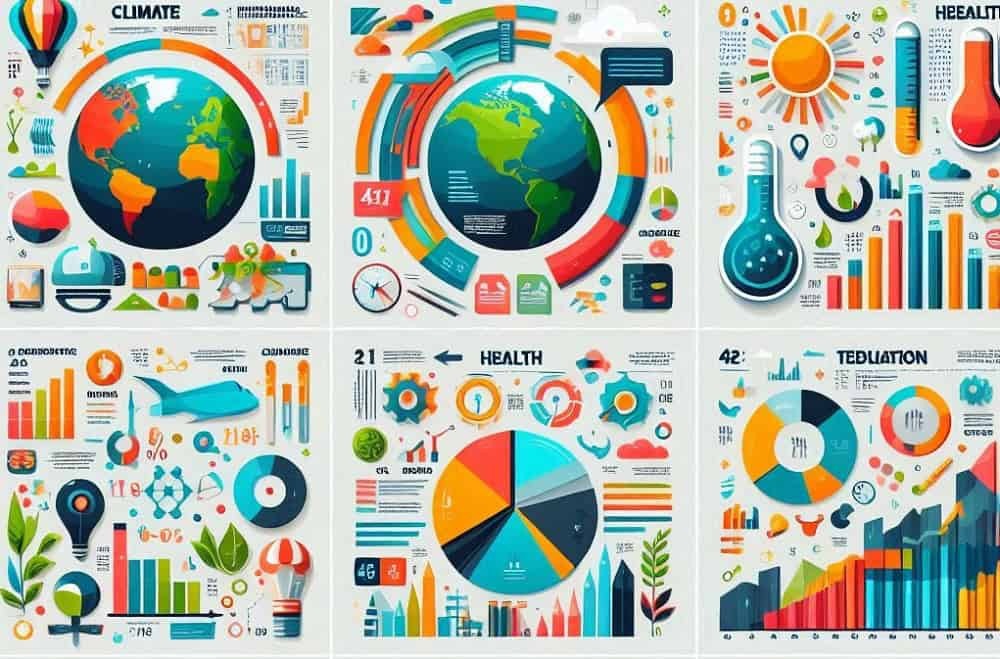Wants to know is AI-Generated content bad for SEO?
Artificial Intelligence (AI) continues to thrive across the internet, highly changing the portfolio of content creation for marketers. It’s still a somewhat time-consuming task to require analytics, understanding, and innovation to affect digital marketing.
Table of Contents
ToggleYou can easily command a standard AI tool to get your content. And you’ll have one prepared and delivered within seconds! But can you actually use AI-created content for SEO? What are the concerns associated with SEO content generated by AI tools?
Let’s check out the brief details to know whether AI-generated content is good or bad for SEO.
Automatically Generated Content for SEO
Any material created, built, or made by an AI tool refers to automatically or AI-generated content. Texts, images, videos, graphics – SEO content involves everything. And more sophisticated upgrades for the tools continue to ease their creation.
The top benefits of AI-based content are –
- No need to have a dedicated team of creators.
- Incredibly fast understanding, creation, and delivery.
- Tailoring of the content for exclusive audiences.
- Excellent customization for upgrades or changes.
- Reduction of costs, time requirements, and efforts.
Tools like ChatGPT and Gemini turned the entire text-based content creation into an oversimplified breeze. You can generate relevant and usable articles, essays, reports within seconds upon commands.
Tools like Firefly, DALL-E, Midjourney crafts visual and captivating artwork relevant to your SEO. And Descript, Wondershare Filmora, Runway are the AI-based tools you can use to develop videos.
Disadvantages of AI-Generated Content
The leading downsides of using AI materials for SEO include –
- AI generates content by pulling pre-existing information without any new concepts, ideas, or information. It significantly lacks value since no innovation or creativity occurs from the already available resources.
- Syntax errors and poor grammar have been serious issues with text-based content. You can’t expect an article full of silly mistakes to rank high in SEO. So, you’ll have to check everything manually for errors.
- AI content may feature misleading themes and/or inaccurate information, not even relevant to the topic. Everything works on algorithms and you’ll have to put out lots of effort to find an exactly matching tone.
- High plagiarism risk prevails for texts, keeping you on the verge of getting banned, suspended, or worse. Nothing new in terms of pattern, representation, or saying takes place, resulting in arrogant scores.
- AI resources severely lack some elementary facts like emotion, motivation, engagement, and style. You can’t expect any uniqueness in the explanation or examples. So, your dwelling time may take a massive plunge.
Loss of employment and/or ethical considerations are more like a new normal instead of straightforward negatives. It’s because AI also presents opportunities to find new jobs without violating standard ethics.
What Does Google Say About AI Content?
Google’s SERP is the ultimate concern when it comes to SEO, with or without AI. The recent wave and widespread adoption made Google release a statement.
Its summary would be – “Automation or AI isn’t against Google’s guidelines as long as the generated content is intentionally used to manipulate SERP ranking.”
So, you’re free to choose AI tools to create relevant content for your web/app. But you can’t generate content to alter or manipulate Google’s ranking algorithm.
However, Google heavily focused on the AI concerns for its March core update. It enforced elimination of low-quality content and potential scaled content abuse.
Scaled content abuse is all about generating webpages only to manipulate SERP. So, you must emphasize quality to serve customers, not messing up with ranking.
Google’s EEAT Guideline (E-E-A-T Approach)
The abbreviation stands for – E = Expertise, E = Experience, A = Authoritativeness, T = Trustworthiness.
- Each of your AI-generated content better complies with the four criteria to accomplish SEO. However, content fully created by automation can barely meet the specifications satisfactorily.
- A well-balanced approach to corroborate all these prerequisites will always create content with value. And it’ll directly or even indirectly take part in solving customer problems or queries.
- Still, directly trying AI poses a major risk as anything can go wrong during search engine indexing. You’ll have to excel in how to humane the artificial style or tone before going for SEO.
Google’s stance is clear with the guideline, letting you work the AI’s potential on user-focused content.
Wrapping Up
Understandably, AI for SEO has alluring positives against concerning negatives. You can’t expect to outmatch or even compete with SEO success achieved by hours of manual labor with oversimplified automation. Humanizing the content to ensure maximum quality is the key to success in SEO or SERP with AI-based content.
For SEO services contact Tectera a SEO company in Scarborough.











